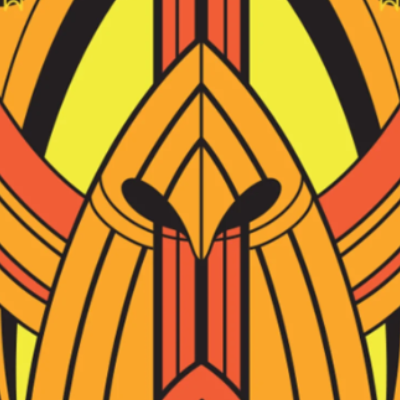

LCARS interface… that is something I haven’t seen in a loooooooong time
The Post Ninja


LCARS interface… that is something I haven’t seen in a loooooooong time


Ah, yes, Linux around the turn of the century. Let’s see…
GPU acceleration? In your dreams. Only some cards had drivers, and there were more than 2 GPU manufacturers back then, too… We had ATi, nVidia, 3dfx, Cirrus, Matrox, Via, Intel… and almost everyone held their driver source cards close to their chest.
Modems? Not if they were “winmodems”, which had no hardware controller, the CPU and the Windows driver (which was always super proprietary) did all the hard work.
Sound? AC’97 software audio was out of the question. See above. You had to find a sound blaster card if you wanted to get audio to work right.
So, you know how modern linux has software packages? Well, back then, we had Slackware, and it compiled everything gentoo style back then. In addition, everyone had a hardon for " compiling from source is better"… so your single core Pentium II had to take its time compiling on a UDMA66-connected hard drive, constrained with 32 or 64 MB RAM. Updating was an overnight procedure.
RedHat and Debian were godsends for people who didn’t want to waste their time compiling… which unfortinately was more common even so, because a lot of software was source only.
Oh, and then MP3 support was ripped out of RedHat in Version 9 iirc, the last version before they split it into RHEL and Fedora. RIP music.
As for Linux on a Mac, there was Yellowdog, which supported the PPC iMacs and such. It was decently good, but I had to write my own x11 monitor settings file (which I still have on a server somewhere, shockingly, I should throw it on github or somewhere) to get the screen to line up and work right.
Basically, be glad Linux has gone from the “spend a considerable amount of time and have programming / underhood linux knowledge to get it working” to “insert stick, install os, start using it” we have now.
Oh no, guess my spam email account that already gets a millionty spam messages an hour will get two millionty spam messages, probably.


wasdqe - a, d strafe left/right on ship bearing, w forward on ship bearing, s reverse on ship bearing, q, e rotate left/right
x to full stop
shift to fire the main engine (like w but spicier)
space to shot gun
assuming en-us qwerty keyboard of course
mouse: hold / tap right click to aim ship towards mouse pointer, hold left click to drag the speed bug and set speed towards your heading ot target
click on an object to target it, automatically facing the ship towards the target and matching velocity relative to it
middle click hold to open the cargo bay. Remember, never brake (s) with the door open unless you want to dump cargo out
assuming right-handed mouse


∆V: Rings of Saturn
A “realistic” asteroids game


Descent, Freespace 2, these two games open sourced a long time ago. They’ve been updated by the community over the years, and ascended far beyond where they started.


exactly. I’m referring to playing protected content and hardware video decoding.


not the same DRM


Depends on the gpu driver, the distro, and how many hoops you feel like jumping through to enable support.
There shouldn’t be any hoops. This should all be native by now.


Parsec is like Moonlight / Sunshine in that it video streams your desktop for remote access. It is very low latency and lets you even game remotely. I’ve used it to remotely video edit and also test things, mainly to control my beefy desktop from my laptop in a remote location. The difference between Moonlight and Parsec is, Parsec’s 1000x less painful to setup, especially when connecting from across the internet.


The client works fine, but you can’t host a linux system using Parsec.


My largest showstoppers with Linux is the lack of DRM support, the lack of “just works” installs, no Parsec (I’ve tried Moonlight/Sunshine many, many, many times, it never works for me), and … this one little thing …
I would use Linux more if either Virtual Desktop or Steam Link worked in Linux. As it stands, neither work, and current implementations of VR in Linux are still alpha / experimental beyond Index / SteamVR direct tethering, not an option for someone that has a cheap standalone headset.


flatpaks are designed for gui apps, and due to packaging dependencies, they are extra heavy in disk space. flatpaks are also most often installed on the user, not systemwide, so no root permissions needed to install.
apt installs systemwide exclusively, but can have a much smaller download size if the dependencies are already installed. Apps sharing dependencies means much less disk space. cli is supported.
It means having a shot at getting a good gaming gpu for cheap


AI Detector Companies:



It’s an “immutable” Fedora, that is, the system comes as a read only image, kind of like how android works. Anything you do is “layered” on top of that image. This means you have to actually try to break it, because you can undo anything you did to break it by simply not booting with the extra layer(s).
You’re encouraged to install in userspace flatpaks instead of system-wide rpms where possible, as system-wide rpms means adding a layer on top if the image as it is.
It is a weird hill to die on for sure.
That only matters if there’s anything to optimize by source compilation. If the program doesn’t have optimization features in the source, it’s wated time and energy.